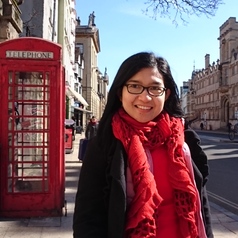More than a year into the pandemic, Indonesia has the most COVID-19 cases and highest fatality rate in Southeast Asia and still grapples with disorganised COVID-19 data management.
The latest media report shows that COVID-19 cases in Indonesia are more prevalent than the official figures. The report indicates that 15% of Indonesians had already been infected by coronavirus, much higher than the estimated 0.4% shown in the government’s data.
In the pandemic’s early days, Indonesians President Joko “Jokowi” Widodo admitted his administration had decided not to reveal all data to avoid stirring panic. His Coordinating Minister for Maritime Affairs and Investment, Luhut Binsar Pandjaitan, has also acknowledged the mismatch of health data between the central government and local governments.
Learnings from Yogyakarta
In October and November 2020, our team investigated how health-care facilities record and organise the reporting of COVID-19 data in Yogyakarta. It’s a province with around 4 million population located 500 kilometres east of the capital Jakarta.
We chose Yogyakarta because it is a small province with four districts and one municipality whose COVID-19 data management involves various health information systems, similar to other provinces in Indonesia. By analysing how the data collection system works in Yogyakarta, we hope we can apply the results in other provinces in Indonesia.
We spoke to officials from various institutions in Yogyakarta, such as the health offices and the communication and information office, at provincial and district levels. We also gathered the views of health facilities, as well as community and application developers.
Based on these interviews, our research captures three problems contributing to the complexities of COVID-19 data management in the province.
1. Fragmented application systems
In DI Yogyakarta, we found several systems used for data management related to COVID-19 at the district, provincial and national levels.
This results from the decentralisation policy that allows each region to create local systems to monitor cases in the field.
This decentralised system is intended to accelerate local government responses. Decentralisation allows local government to act quickly compared to waiting for policies from the central government.
However, this makes data and information flow from local administrations to the central government time-consuming as the data are not fully integrated.
2. Date entry duplication
The absence of an integrated system covering both local and national levels has prevented the regions from providing a single valid data set.
We found nine examples of COVID-19 data collection and analysis apps between district, provincial and central authorities and health-care facilities. These cover case detection, contact tracing, laboratory confirmation, self-screening, logistics and health-care resources data collection.
In general, health-care facilities in DI Yogyakarta have an internal information system in each hospital or local primary health centre. The main purpose is to collect patient care data for all cases.
During the pandemic, the district health office and the local government has created a local COVID-19 application. The provincial COVID-19 Task Force has also developed an application to integrate data between districts called COVID-19 Monitoring Systems (CMS).
At the national level, the data collection system focuses on two main tasks: collecting COVID-19 confirmed cases and providing updated data on human resources, logistics and bed availability.
Unfortunately, at the local and national level, these various applications are not integrated. This means health-care staff at the health facility level must capture the same data several times in different applications, which increasing workload and the likelihood of making errors.
3. Lack of human resources
Carrying out all the activities to combat COVID-19 imposes a heavy burden on health facilities. Health workers need to provide services to patients, contact tracing and case monitoring. They also suffer from a shortage of human resources when it comes to data capture in different applications.
It is common when health workers capture the COVID-19 data after service hours, resulting in incomplete data and delayed data submission. This leads to discrepancies between data in the system and manual reports.
For example, laboratories provide data, such as COVID-19 test results, to health facilities in different formats and methods, such as PDF, Excel files, email and Google Drive.
Health workers then need to combine these data in one format at the district health office before sending them to provincial and central governments.
Furthermore, due to accessibility issues with applications and the pressure to report data quickly, we found health-care workers and officials are using informal communication channels such as WhatsApp to provide updates on the numbers of tests, new cases and deaths each day.
This again increases the likelihood of making mistakes. It also brings up data privacy issues for patients’ medical information.
So what is the solution?
The Indonesian government has issued a presidential decree to integrate multiple data sources to improve policy and decision-making.
But the regulation is still poorly implemented.
In dealing with a pandemic, the government should set up a clear and concise system to regulate the flow of data from the local to the central level. The government should also reorganise the large number of information systems and data management applications to make them more effective.
All data entry from local administrations should comply with national COVID-19 data and meta-data standards. This means the data from the regions can be sent directly from the local application currently being used to the central application through data integration. It also means the system should facilitate communication between the various existing systems and services.
Thus central agencies and regional agencies can easily access and share data.
We recommend the Indonesian government use Enterprise Architecture principles from The Open Group Architecture Framework to implement a conceptual blueprint that defines the structure and operation of organisations to align with different measures in response to COVID-19.
The blueprint should focus on addressing challenges such as the vaccination process and reducing restrictions on social activities.
Based on these considerations and several references, we adopt the OpenHIE framework, a free, adaptable and open framework to improve health information systems.
OpenHIE is suitable for a community-based bottom-up approach to build a health information system. It is also effective to help mitigate problems associated with COVID-19 data collection.



 EssilorLuxottica Bets on AI-Powered Smart Glasses as Competition Intensifies
EssilorLuxottica Bets on AI-Powered Smart Glasses as Competition Intensifies  Trump Signs Executive Order to Establish National AI Regulation Standard
Trump Signs Executive Order to Establish National AI Regulation Standard  U.S.-EU Tensions Rise After $140 Million Fine on Elon Musk’s X Platform
U.S.-EU Tensions Rise After $140 Million Fine on Elon Musk’s X Platform  SpaceX Reportedly Preparing Record-Breaking IPO Targeting $1.5 Trillion Valuation
SpaceX Reportedly Preparing Record-Breaking IPO Targeting $1.5 Trillion Valuation  Moore Threads Stock Slides After Risk Warning Despite 600% Surge Since IPO
Moore Threads Stock Slides After Risk Warning Despite 600% Surge Since IPO  Trump Criticizes EU’s €120 Million Fine on Elon Musk’s X Platform
Trump Criticizes EU’s €120 Million Fine on Elon Musk’s X Platform  SK Hynix Considers U.S. ADR Listing to Boost Shareholder Value Amid Rising AI Chip Demand
SK Hynix Considers U.S. ADR Listing to Boost Shareholder Value Amid Rising AI Chip Demand  China Adds Domestic AI Chips to Government Procurement List as U.S. Considers Easing Nvidia Export Curbs
China Adds Domestic AI Chips to Government Procurement List as U.S. Considers Easing Nvidia Export Curbs  Nvidia Develops New Location-Verification Technology for AI Chips
Nvidia Develops New Location-Verification Technology for AI Chips  EU Court Cuts Intel Antitrust Fine to €237 Million Amid Long-Running AMD Dispute
EU Court Cuts Intel Antitrust Fine to €237 Million Amid Long-Running AMD Dispute  SK Hynix Labeled “Investment Warning Stock” After Extraordinary 200% Share Surge
SK Hynix Labeled “Investment Warning Stock” After Extraordinary 200% Share Surge  Trello Outage Disrupts Users as Access Issues Hit Atlassian’s Work Management Platform
Trello Outage Disrupts Users as Access Issues Hit Atlassian’s Work Management Platform  SK Hynix Shares Surge on Hopes for Upcoming ADR Issuance
SK Hynix Shares Surge on Hopes for Upcoming ADR Issuance  Microsoft Unveils Massive Global AI Investments, Prioritizing India’s Rapidly Growing Digital Market
Microsoft Unveils Massive Global AI Investments, Prioritizing India’s Rapidly Growing Digital Market  Evercore Reaffirms Alphabet’s Search Dominance as AI Competition Intensifies
Evercore Reaffirms Alphabet’s Search Dominance as AI Competition Intensifies 


































